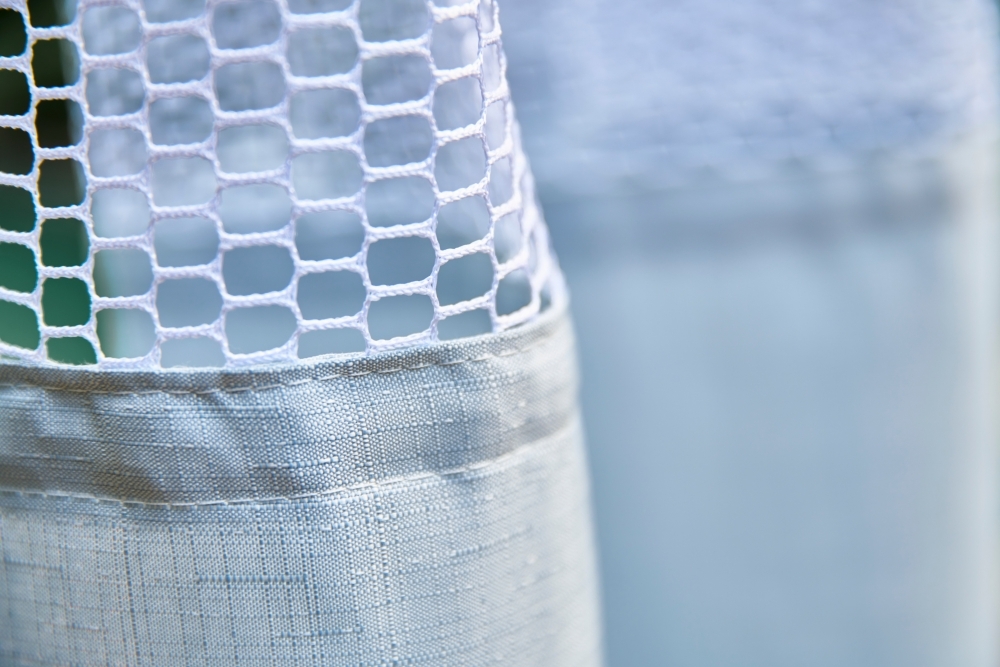


The curtains comprise a polymer matrix loaded with nanoparticles that give the material special properties (photo: BR Goods)
Published on 11/21/2022
By Fábio de Castro | Agência FAPESP – Hospital curtains, such as the privacy screens around beds in intensive care units (ICUs), play an important role in reducing contamination by germs dispersed in the environment. A Brazilian firm called BR Goods, which has been operating in the market for hospital goods for over a decade, is investing in nanotechnology to enhance its hospital curtains. It is developing a self-cleaning product with flame-retardant, anti-microbial and anti-fungal properties that also affords protection against ultraviolet radiation.
To develop the new products, the company, based in Indaiatuba, São Paulo state, is partnering with the Federal University of the ABC (UFABC), the University of São Paulo’s Engineering School (POLI-USP) and the Federal University of São Paulo (UNIFESP), and has won support from FAPESP’s Innovative Research in Small Business Program (PIPE).
“BR Goods isn’t a startup, but it’s a company that aims to innovate in its sector. We already produced flame-retardant curtains. Our main challenge was to add more functionality to the product,” says chemist Luciano Avallone, a professor at UFABC and principal investigator for the project.
According to Avallone, the curtains are produced from a polymer matrix, and the challenge is combining different types of nanoparticles within this matrix to give the material special properties. “The more substances we put in the matrix, the less resistant it becomes. Some of its properties may be lost. Our problem was adding a large number of loads while at the same time maintaining its characteristics. We recently completed the project and succeeded in maintaining functionality,” Avallone says.
The firm has produced curtains with special functions since 2003, when Albert Einstein Jewish Hospital (HIAE), a leading healthcare institution located in São Paulo, commissioned a novel type of hospital bed curtain with flame-retardant, anti-fungal and anti-microbial properties. In 2008, the firm also launched a system of wall guards and door protectors.
“In 2020, we began partnering with UFABC, where I’m a faculty member, and POLI-USP to enhance our products. The team at UFABC put forward an innovation proposal for the firm, and we started working together,” Avallone recalls.
The firm saw an opportunity for open innovation, in the shape of project pipelines and research lines involving partnerships with academia, instead of having to establish all the research infrastructure itself.
“The universities benefit, and the firm partners with customers and suppliers to fuel innovation,” Avallone explains.
Initially, in 2020, the partnership strategy earned the support of FINEP, the Brazilian Innovation Agency, an arm of the Ministry for Science, Technology and Innovation (MCTI), to functionalize the firm’s products associated with PVC, such as staircase handrails and wall guards. Next, it received support from PIPE to develop nanofunctionalized curtains.
“This entailed the assembly of a multidisciplinary team involving materials engineers, chemists and specialists in microbiology. We’d already tested the anti-microbial functions of silver nanoparticles. We partnered with Paula Haddad, a professor at UNIFESP in Diadema, to synthesize the silver nanoparticles, for example,” says Avallone, who has master’s and doctoral degrees in inorganic chemistry and materials chemistry.
Other substances besides silver were tested in many combinations. “We began by working on the architecture of these nanoparticles, coating them with other substances and producing blends, for example, to reduce final load without losing properties and enhance functionality,” Avallone explains.
They succeeded in producing a hybrid composite of polymers with silver nanoparticles (AgNP), titanium dioxide (TiO2), zinc oxide (ZnO) and magnesium oxide (MgO). Even with a large quantity of nanoparticles, they were able to achieve compatibility so that the raw materials for the curtains did not lose the desired mechanical and physical properties.
“The preliminary results were highly satisfactory. I’d say we were 90% successful. We’re now moving ahead into the second stage of the research, which will involve new adaptations focusing on product development,” Avallone says.
Culture of innovation
During the first stage of the project, supported by PIPE-FAPESP, most of the tests were conducted on the premises of partner universities. Thanks to the project, BR Goods was able to bring in a scholarship awardee who conducted quality tests and developed some portions of the characterization methodology.
“It’s very important to bring this culture of innovation into the company. Our partnerships with universities enabled us to experience the technological development process up close. All personnel in sales, finance and production realized something new was going on. We saw the establishment of this culture of innovation first-hand and knew it made sense for the company,” Avallone says.
Besides Avallone and Haddad, engineers Danilo Justino Carastan, a professor at UFABC, and Izabel Fernanda Machado, a professor at POLI-USP, also participated in the project, alongside physicist Fabio Furlan Ferreira, a professor at UFABC, Vanessa Barbosa Malaquias, a PhD candidate at USP’s School of Pharmaceutical Sciences, Newton Kiyoshi Fukumasu, a postdoctoral fellow at POLI-USP, and designer Sergio Antonio Milani, the scholarship holder.
Source: https://agencia.fapesp.br/40104